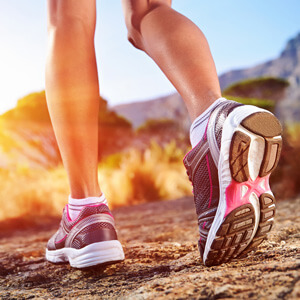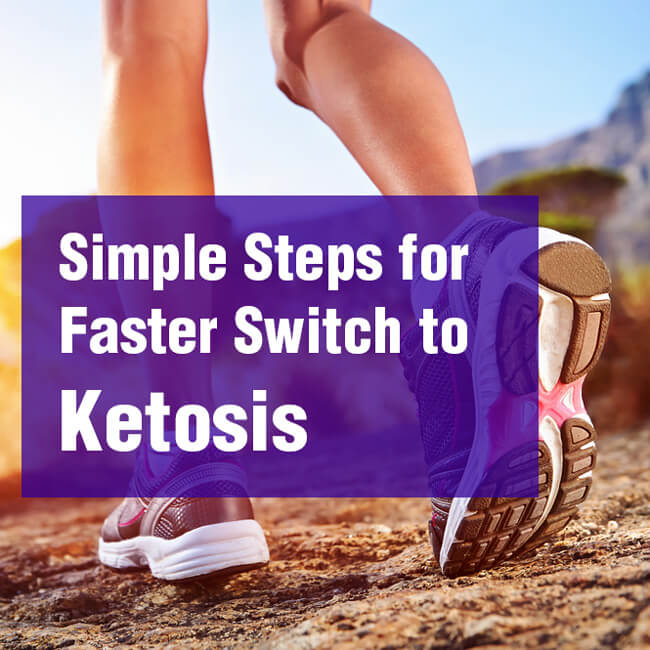 Started Keto – but struggling to get into ketosis? You are not alone.
Started Keto – but struggling to get into ketosis? You are not alone.
Most people make the switch within 1-2 weeks. But for some of us, it takes much longer.
And the transition period is not exactly fun. Your body is still craving carbs, so you are very likely to experience tiredness, sugar cravings and possibly also the infamous Keto flu.
Is there anything you can do to get into ketosis faster? Yes! Here’s a quick guide to simple steps you can take to break into ketosis faster.
Your macros (carbs, fat, protein) must be absolutely right
Macros are the foundation of the Keto diet. To get into ketosis, you must follow Keto guidelines precisely. So if you are struggling, focus on this area and make sure you are definitely on track.
The recommended macro balance for Keto is usually as follows:
Net Carbs: 5-7% of calories, which works out between 15-40g of net carbs a day. Most people aim for 20g net carbs.
Fat: 65-80% of calories
Protein: 15-25% of calories
Use a Keto macro calculator to figure out precisely how many grams of each macronutrient you should be getting. Track all your food and make sure you stay within those limits.
And it’s not just about the carbs! Getting the right ratio of fat and protein is equally important. If you don’t eat enough fat, breaking into ketosis will be harder.
Finally, avoid these common beginner mistakes:
- Don’t rely on your memory – track food with an app or a written food journal
- Don’t just guess the carb counts – look them up (at least until you get to know them for all your favourite foods)
- Don’t estimate the amount of food you eat – use weighing scales or volume cups to actually measure it
Related post: How to get your carb counts right
Choose “clean” Keto foods
Some of us can get away with eating “dirty Keto” – which includes junk foods, sweeteners, processed foods etc – and still stay in ketosis.
There are also some natural low-carb foods that are technically permitted on Keto but can sometimes interfere with ketosis – for example, berries, nuts and dairy.
So if your metabolism is really sensitive, you may have to be more strict with your food choices in order to achieve and maintain ketosis.
The “clean Keto” approach is to keep it very simple by eating only the following:
- animal proteins: meat, fish, poultry, eggs
- green leafy vegetables and salad vegetables
- healthy oils and animal fats
Cut out the following foods for now – at least until you break into ketosis. After that, experiment with adding them back one by one to check if you can still maintain ketosis.
- nuts and seeds
- berries
- all sweeteners
- all dairy (even if it’s high-fat)
- all junk and processed foods
Watch out for hidden carbs
Carbs are hiding everywhere! Keto beginners must stay vigilant and watch out for those pesky creeping carbs.
Any processed food. Almost all ready-made foods have added sugar or flour. Even meat products like supermarket sausages and burgers are often stuffed with breadcrumbs and potato starch.
Ready-made condiments. Sauces like ketchup, Caesar dressing or vinaigrette usually contain sugar. We often think of these as negligible, but even a few teaspoons can mess up your carb count.
Meat marinades and rubs. Some fresh meat and poultry come covered in a pre-made marinade, like BBQ sauce. You might think you are safe since you are just buying a chunk of meat. But it has been bathed in carbs!
High-carb nuts. Most nuts are low in carbs but there are several exceptions – watch out for chestnuts, cashews and pistachios.
Shellfish. Fish is zero carb, but shellfish is not. Whelk (sea snail), mussels, oysters, scallops and squid all have a few carbs in them.
Offal meats. Offal meats like liver or kidneys are extremely nutritious, but they do contain a few carbs. Watch out for meat pates too, as they are often made from liver.
Medicines. Many over-the-counter remedies are loaded with sugar. Cough syrups and sore throat lozenges are basically sweets with just a miniscule amount of active ingredient.
Polyols. Sugar alcohols (polyols) are popular sugar substitutes. It is often claimed that they are zero-carb. No! the only polyol that’s almost zero-carb is erythritol. Others do include digestible carbs, so they cannot be completely excluded from your carb counts. More about digestible carbs in polyols
Misleading sugar names. Sugar itself also likes to hide in plain sight, disguised under some scientific or fashionable name. See the list of misleading sugar names
Try targeted supplements to get into ketosis
Sometimes you need an extra boost to help you break through. Certain nutritional supplements can help to speed up your transition to ketosis and reduce the symptoms of Keto flu.
Exogenous ketones instantly elevate your ketone levels inducing “artificial” state of ketosis. Marketing claims on these products claim that this can help you lose weight – which is a bit dubious. However – if you are already on the brink of switching over to ketosis naturally, exogenous ketones can give you that last crucial push in the right direction. The most common format is BHB salts – providing electrolytes and exogenous ketones in a single product. Please note that “Raspberry Ketones” are NOT the same, despite the name – they are a bit of a scam that does precisely nothing for your ketosis.
Co-Enzyme Q10 and L-Carnitine were recommended by Dr Atkins to speed up ketosis and improve fat-burning metabolism.
The following supplements don’t have a direct effect on ketosis, but they may help to reduce symptoms of Keto flu and improve your energy levels while you are going through your transition.
Key minerals – potassium and magnesium replenish your electrolyte levels and help to reduce the symptoms of Keto flu.
High-quality multivitamins with extra-strong vitamins B and C> bridge any potential nutritional gaps and boost energy-yielding metabolism.
Do a short-term Fat Fast
Have you tried everything mentioned above – and still didn’t get into ketosis? Try a “Fat Fast” to kick-start your fat-burning metabolism.
Fat Fast was recommended by Dr Atkins for those who struggle to break into ketosis on Atkins Induction. It’s basically is an extreme version of Keto.
You would keep your calorie intake very low – at about 1,000-1,200 calories a day (you do need to count calories for this). 80%-90% of these calories must come from fat.
Follow the Fat Fast until you break into ketosis – but for no longer than 5 days maximum. If you follow the Fat Fast rules precisely, you should break into ketosis.
Read the Complete Guide to Fat Fast
Try intermittent fasting
Intermittent fasting is becoming a popular method to complement Keto and make it even more effective. It can also help you to break into ketosis if you are struggling to do so in the beginning.
Basically, you add a period of actual fasting to your daily routine. There are several common protocols, ranging from about 8-12 hours to full days.
Check out this guide to Keto and intermittent fasting for more information on benefits and protocols.
Do you have any tips on how to get into ketosis?
Do you have any tips to share on what helped you with ketosis? Please share in the comments!

How do you know when you’ve hit ketosis?